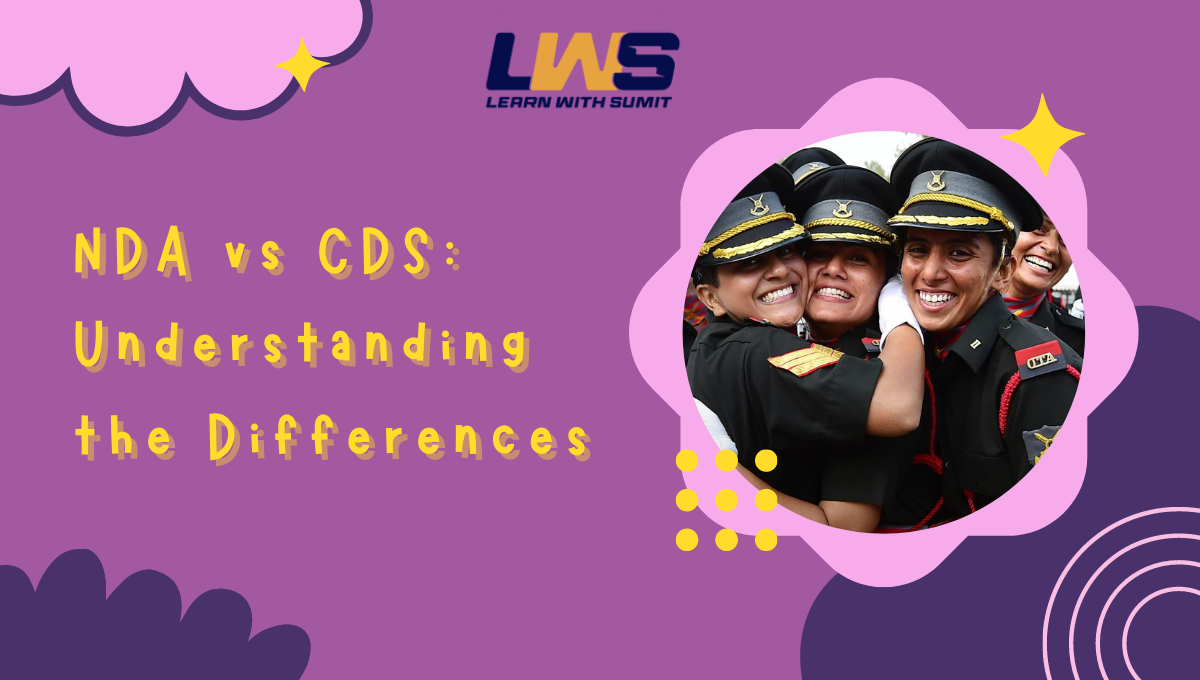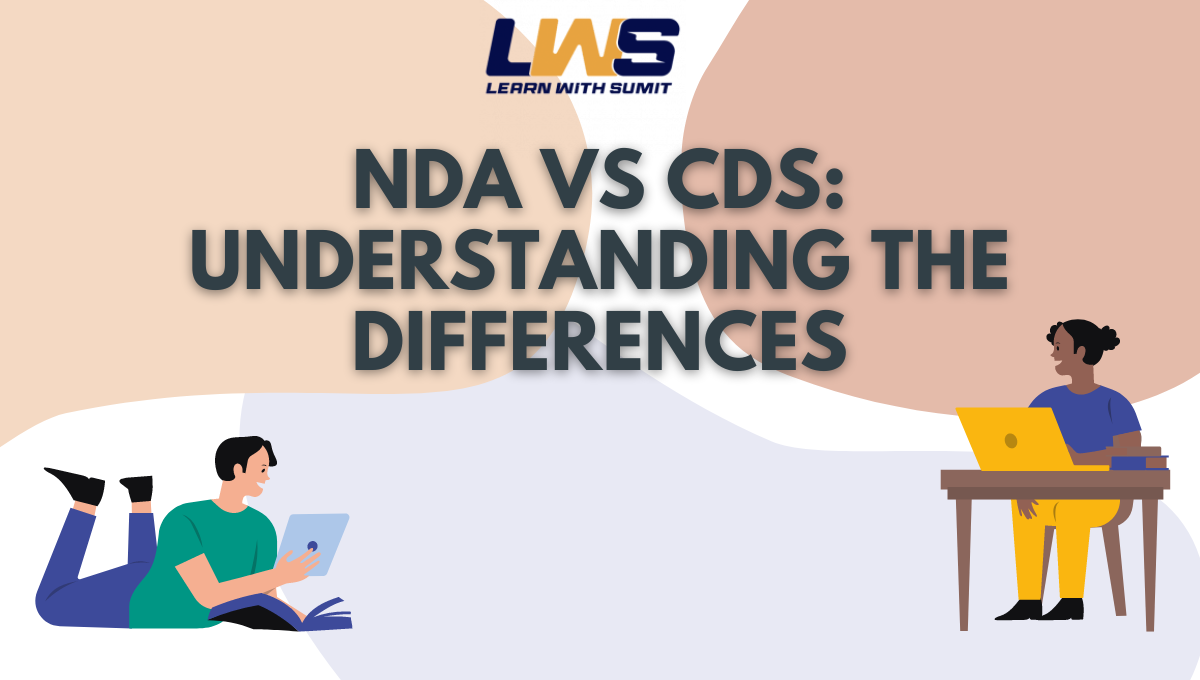NDA vs CDS – National Defence Academy (NDA) and Combined Defence Services (CDS) are two of the most popular options for candidates aspiring to join the armed forces in India. While both the NDA and CDS provide opportunities for entry into the Indian Armed Forces, there are significant differences between the two programs. In this blog, we will explore the differences between the National Defense Academy and Combined Defence Services.

1. Eligibility:
The eligibility criteria for NDA and CDS ( NDA vs CDS ) are different. NDA is open to candidates who have completed their 10+2 education, while CDS is open to candidates who have completed their graduation. For NDA, candidates must be between the ages of 16.5 to 19.5 years on the date of joining the Academy, whereas for CDS, the age limit is 20 to 24 years.
2. Selection Process:
The selection process for NDA and CDS ( NDA vs CDS ) also differs. The selection process for NDA consists of a written test conducted by the Union Public Service Commission (UPSC), followed by an interview by the Services Selection Board (SSB). The written test for NDA consists of objective-type questions from Mathematics and General Ability.
For CDS, the selection process also consists of a written test conducted by UPSC, but the exam consists of objective-type questions from English, General Knowledge, and Mathematics. The second stage of the selection process for CDS is an interview by the SSB.
3. Training:
The training provided in NDA and CDS ( NDA vs CDS ) is also different. NDA provides a three-year training program for the Army, Navy, and Air Force. After completing the training, candidates are awarded a Bachelor’s degree in Science/Arts/Computer Applications from Jawaharlal Nehru University (JNU).
CDS, on the other hand, provides a one-year training program for the Indian Military Academy (IMA), Officers’ Training Academy (OTA), Indian Naval Academy (INA), and Air Force Academy (AFA). After completing the training, candidates are commissioned as officers in the respective branches of the Armed Forces.
4. Service Branches:
Another major difference between NDA and CDS ( NDA vs CDS ) is the service branches they offer. NDA provides entry to the Army, Navy, and Air Force, while CDS provides entry to the Indian Army, Indian Navy, and Indian Air Force, as well as the Officers Training Academy (OTA).
5. Gender Inclusivity:
The NDA is exclusively for male candidates, while the CDS allows both male and female candidates to apply for all branches except the Indian Army.
6. Career Advancement:
The NDA provides a degree after the completion of the training, which can be useful for further studies or employment in civilian sectors. However, the degree does not hold much significance in the Armed Forces as promotions are based on seniority and performance, rather than educational qualifications. In contrast, CDS provides opportunities for career advancement and specializations, with officers able to move up the ranks to higher positions based on their performance and experience.
7. Training Structure:
The training provided in NDA is divided into two phases – the first phase is a six-month long training at the National Defence Academy, followed by another six-month training at the respective service academy. The training in the service academy is specific to the branch selected by the candidate, which includes Army, Navy, and Air Force. In contrast, CDS provides training for specific branches of the Armed Forces such as Indian Military Academy (IMA), Officers’ Training Academy (OTA), Indian Naval Academy (INA), and Air Force Academy (AFA) based on the candidate’s preference and eligibility. ( NDA vs CDS )
8. Salary and Benefits:
The salary and benefits provided to NDA and CDS ( NDA vs CDS ) officers differ significantly. While both offer a decent salary, the pay structure for CDS officers is better, with higher starting pay and more allowances. CDS officers also receive various benefits such as housing, medical, and travel allowances, which are not provided to NDA officers.
9. Selection Ratio:
The selection ratio for NDA is much more competitive than that of CDS. Every year, more than a million candidates apply for NDA, and only a few thousand are selected. In contrast, the selection ratio for CDS is relatively more favorable, with a higher chance of being selected. ( NDA vs CDS )
10. Duration of Service:
The duration of service for NDA and CDS officers also differs. NDA officers are required to serve for at least 10 years in the Armed Forces, whereas CDS officers are required to serve for a minimum of 14 years. The duration of service may vary based on the policies of the respective branches of the Armed Forces.

In conclusion, both NDA and CDS ( NDA vs CDS ) provide excellent opportunities for those who aspire to serve in the Indian Armed Forces. However, the choice between the two programs depends on various factors such as eligibility, service branches, training structure, career advancement, salary and benefits, and the duration of service. Candidates must carefully evaluate their options and choose the program that best aligns with their aspirations and career goals.












